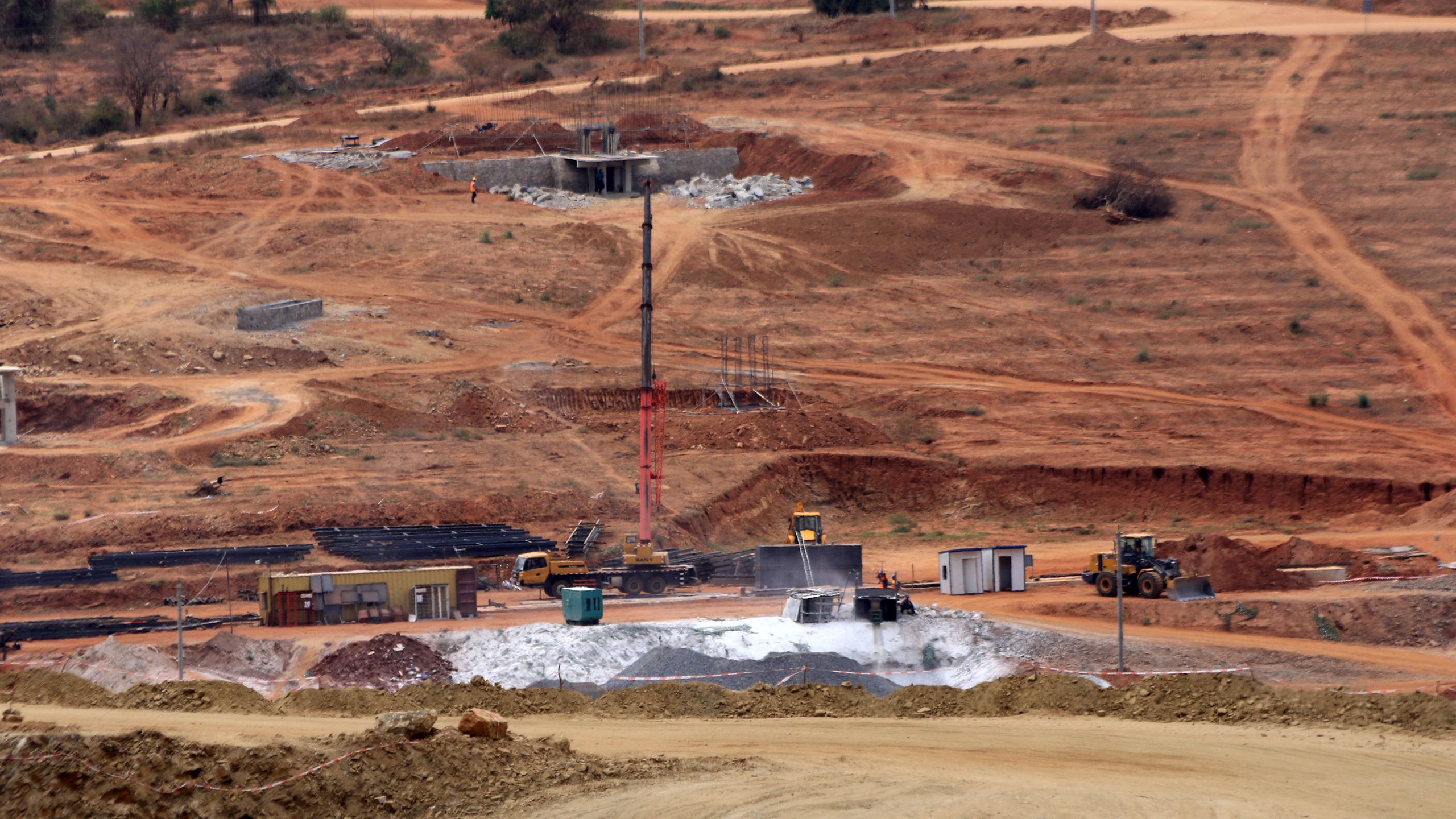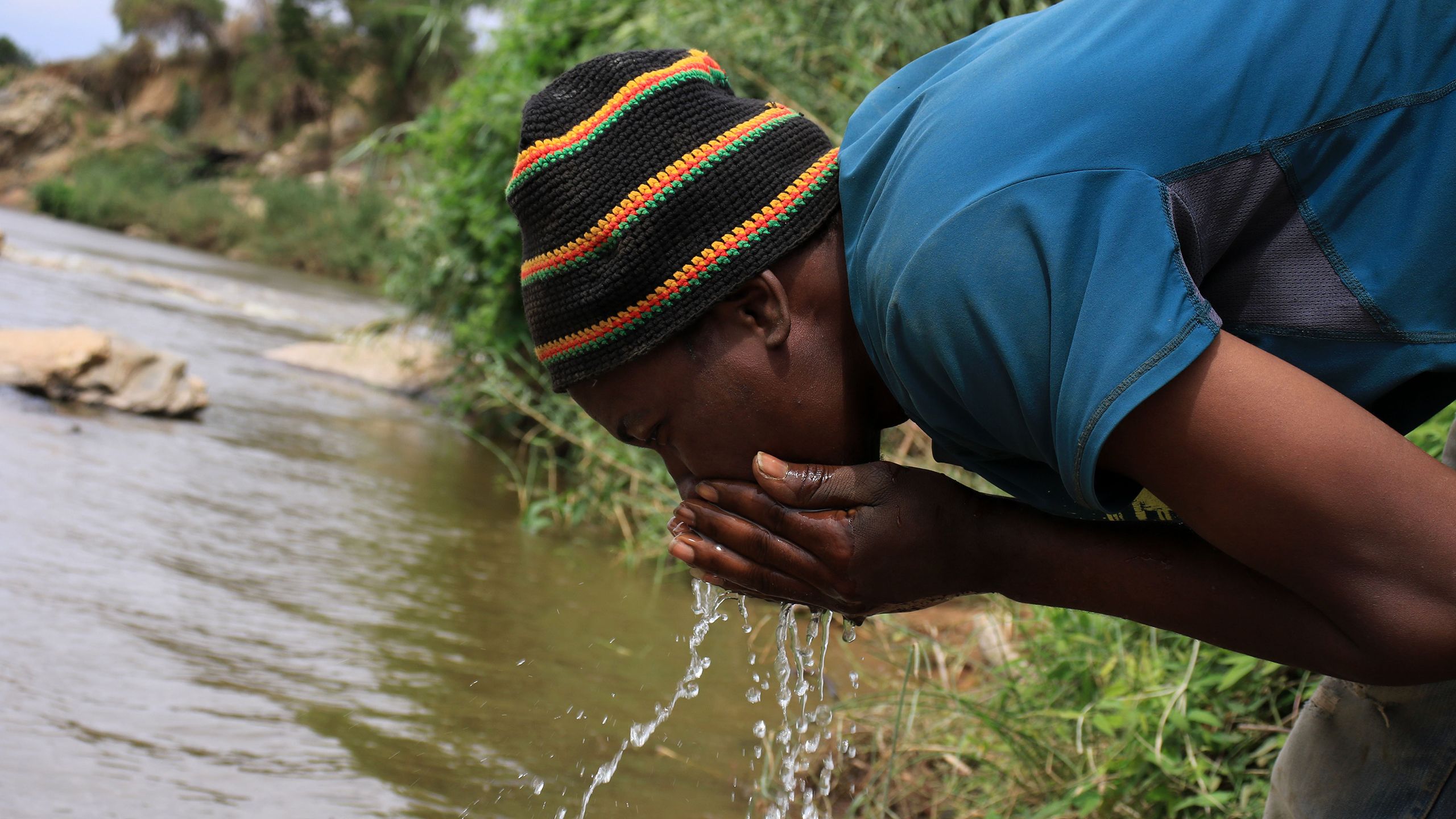Part three:
The Sh82bn sewer lake

The primary source of water for the largest dam in East Africa caries deadly metals, bacteria and poisonous chemicals
When engineers building the Sh82 billion multipurpose dam in Makueni complete their job and finally open valves for water to flow into the gigantic water reservoir, they will be opening doors to a cocktail of dangerous poison and sewage.
Thwake, which will be 10 times the size of Ndakaini dam when completed, and the largest dam in East Africa, has everything right, except the quality of water it plans to harvest.
The primary source of water for the dam, which is partly funded by the African Development Bank and the Kenyan taxpayer, is Athi River, which is fed by the poisoned Nairobi River.
Thwake River is the other water source that is hoped to supplement Athi River. But it is a seasonal river and is dry most of the year, including today. This leaves the project to the mercy of the Athi River, which becomes Galana River and Sabaki River downstream.
“If you go to Athi River today, you will see a green layer on top of the water and, as it gets drier, the water becomes thick, just to give you a picture of how polluted that water is,” Robert Kisyula, Makueni's Water minister, who also chairs the inter-county task force on Thwake, told the Nation in an interview.
He said his team has had several meetings with the current and former Water Cabinet Secretaries and have flagged the issue of pollution.
“People using the river upstream do not care. We have observed the increase of cancer as a disease in the rural set-up. We have been incubating this problem for years,” Mr Kisyula said.
“If we do not do something right now, we may end up wiping out a generation,” he said.
The 80.5-metre-high Thwake dam promises to change the food situation in the eastern and coastal region of the country for good. It would enable the storage of 681 million cubic metres of water, the bulk of which would be used for electricity production and downstream irrigation of agricultural land.
About 22 million cubic metres are set to be used for upstream irrigation while another 34 million cubic metres will be for human use.
The initial phase of the project is expected to be completed in December 2022.
There will be three other phases, which will include the construction of hydraulic plants to treat water for household use by an estimated 674,700 people and for 640,000 residents in the Konza technology city.
The other phases will see the dam used for hydroelectric energy production while the final phase will put at least 40,000 hectares in Kitui and Makueni counties under irrigation.

A man drinks water from Athi River in Thwake, Makueni.
A man drinks water from Athi River in Thwake, Makueni.
Last month, excited engineers building the dam started diverting a stretch of Athi River from its natural course, opening the next chapter in the construction of the gigantic dam.
According to the plan, they hope to divert the current path of the river to create space for constructing the dam, which is being built across Athi River.
Diverting the river would enable the Chinese contractors to carry out civil engineering works, including constructing the dam walls, water treatment works and hydropower generation, without difficulties.
After they are done, they will channel the river back to its original course, and start harvesting the water into the dam.
To achieve this fete, the dam architects will build two huge tunnels to act as an alternative underground route for the river during the construction period. The contractors said the tunnels, which are set to be completed by next March, are 700 metres long and have a diameter of 12 metres.
“With its 80.5-metre high wall and a 10-kilometre long backflow along both Athi and Thwake rivers, it will harvest a whopping 700 million cubic metres of water — making it the biggest reservoir ever built in Kenya,” David Kimingi, the project consultant, told the Nation in a recent interview.
That is not all. Besides generating 23 megawatts of electricity, the dam will supply 150,000 cubic metres of piped water daily for domestic use, 35,000 cubic metres for the Konza techno city while the rest would be supplied to the adjacent towns in Kitui and Makueni, and irrigate farms downstream.
His task force has warned that unless the country deals with the river pollution, residents of Konza City, Kenya’s technology city which is also under construction, and more than 1.3 million people who will directly be served by the dam water, will be the first casualties of the poison that runs deep in the river.
“In our last meeting, which had governors, MPs and MCAs, we also said that until that issue of pollution of Athi River is resolved, we will end up with a white elephant since the water is unfit for human consumption,” he said.
And he is not wrong.
A Nation investigation in conjunction with scientists and toxicology experts from the University of Nairobi has revealed that the river carries at least six deadly metals, bacteria and loads of poisonous chemicals as it moves from Nairobi to the Kenyan coast.
"Nobody is safe since the food grown by this water comes to five-star hotels in Nairobi."
– Machakos Governor Alfred Mutua
Our samples at Thwake, right where the river will be diverted into the dam, found four of these metals. And the water had concentrations of sewage at over 120 times higher than what is recommended.
Meanwhile, the Chinese contractor continues to blow up rocks and to dig up more ground for the project, that will end up collecting these chemicals. Our experts who supported this investigation said that unless something is done, the dam, a Vision 2030 flagship project, will end up being the biggest sewage dam in East and Central Africa.
The water and sediment samples also collected at Thwake tested positive for aluminium, manganese, barium and iron heavy metals.
But it is aluminium and manganese that need the most urgent solution given that we found them in very dangerous proportions. Samples at Thwake Dam had 24 times more of aluminium than the recommended 0.11 ppm.
Excess aluminium contamination causes asthma while manganese affects the respiratory system and the brain, resulting in hallucinations, forgetfulness and nerve damage.
In some cases, manganese contamination also causes tumour development. Thwake was also one of the most polluted parts of the river when it came to tests on presence of bacteria and human waste. Its fecal contamination was 124 times more than what is safe while bacteria level was at least 8.7 times higher than the safety zone. It also had 190 total suspended solids against the recommended 30 or less.
If all these heavy metals and chemicals were to accumulate in a dam and be used as planned, then Kenya would be staring at a serious health crisis in the next decade. Machakos Governor Alfred Mutua said his government has been aggressively shutting down polluters in his county but it is an effort in futility since those in Nairobi are yet to be dealt with.
“We are dealing with high cases of cancer, respiratory diseases, stomach ailments and skin diseases, among them rashes. Nobody is safe since the food grown by this water comes to five-star hotels in Nairobi,” Mutua said.
He accused the National Environmental Management Agency (Nema) of giving polluters he has shut down a clean bill of health despite the dangerous chemicals flowing into the river. Nema did not grant us an interview on this project and has not responded to our e-mail questions.

